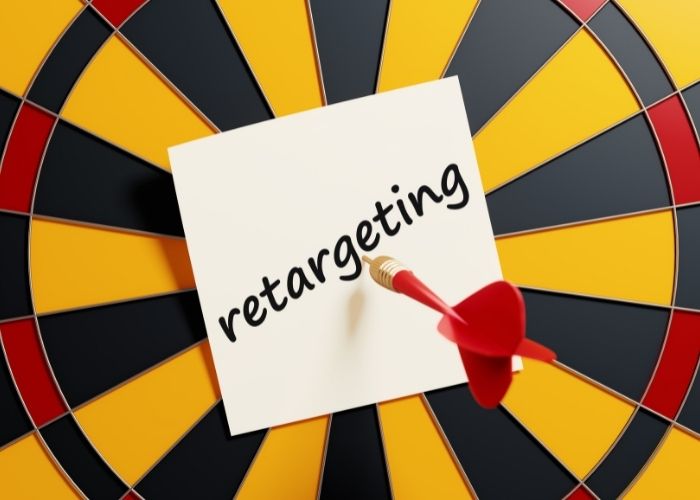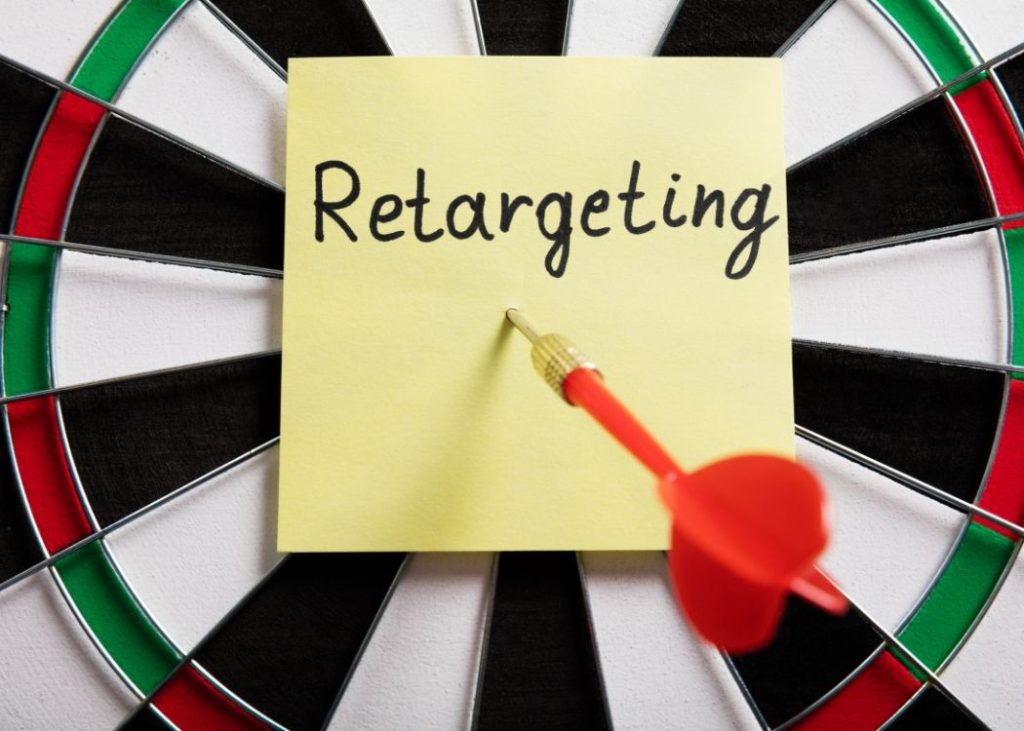Best Retargeting Strategies to Maximize Sales

What is Retargeting?
Retargeting is a great way to keep your brand in front of potential customers who have already shown an interest in what you have to offer.
There are a number of different retargeting strategies that you can use, and each has its own benefits.
One of the most common retargeting strategies is known as “pixel tracking”, which involves placing a small piece of code on your website’s homepage.
When someone visits your website – the code will “tag” them and track their movements around your site (clever, eh?)
This information can then be used to target them with ads on other websites.
Another popular retargeting strategy is “email list targeting” (the best method for us!)
This involves building a list of email addresses of people who have shown an interest in your product or service.
You can then target these people with ads via email.
Using retargeting strategies can be a great way to boost your website sales, as it allows you to stay in front of potential customers who have already shown an interest in what you have to offer.
It’s important to use the right retargeting strategies for your business, and there are a number of different options available.
Choose the one that best suits your needs and watch your website sales and affiliate commissions skyrocket!
Edit: We’ll start with email retargeting as we feel this will benefit your online business sales the most!

Email Retargeting: How It Works and What to Expect
Using email retargeting strategies involves sending targeted emails to previous website visitors.
These emails usually contain a special offer or coupon (like 15% off a product or service) that is only available to people who have visited the website before.
This method of email retargeting is a great way to bring previous website visitors back to your site, and it can be especially effective for affiliate marketers.

When done correctly, email retargeting can result in a significant increases in conversion rates and revenue!
However, there are a few things you should know before you set up email retargeting (from our experience)
These are:
- Create a list of email addresses (you can pull this data from a CRM, autoresponder, or segmentation list) of people who have visited your website before.
- Create and send a special offer or coupon that is only available to people on this email list
- Create an email campaign that will send the offer or coupon to those subscribers
Implementing email retargeting strategies can be an extremely effective marketing tool – if it’s done right!
Marketing is our game (we are experts), and we are currently offering you a chance to partner with us in the #1 home based business, you will be able to join our team and interact with us, and our community.

Setting Up Email Retargeting
Lets elaborate a little further on how to setup email retargeting.
The first step is to create a list of email addresses to target.
This can be done in several ways.
You can collect email addresses from your website visitors, or you can import a list of contacts from your email marketing service.
Once you have a list of email addresses, you need to create a custom audience in your email marketing software of choice.
This will allow you to target your emails specifically to individuals who have interacted with your business.

Email Retargeting Content Creation
Next, you need to create a piece of content that will appeal to your target audience.
This could be a blog post, an eBook, or even just an offer for a free consultation.
Once you have your content ready, it’s time to create your email campaign.
The first step is to create a headline that will catch your audience’s attention.
Then, you need to write a brief description of the offer and how it can benefit the reader.
Email Retargeting Call To Actions
Finally, you need to include a call to action that encourages the reader to take action.
Be sure to test different versions of your email campaigns to see which ones generate the best results.
Email retargeting strategies can be an extremely effective way to reach out to past customers and encourage them to return to your business.
By using a combination of targeted content and persuasive messaging, you can significantly increase your chances of converting leads!

Customer Retargeting Strategies
These three types of customer retargeting strategies can be highly effective, although each is only slightly geared towards affiliate marketing websites.
This is because each relies on using some kind of advertising in your business, such as solo ads or social media ads.

First, we have website retargeting, which targets users who have visited your website but haven’t yet made a purchase of a product or service you are offering.
You can show them ads for similar products or services on other websites they visit to persuade them to return to YOUR website and make that purchase.
Another strategy is known as ‘retargeting with lookalike audiences‘, which sounds complex, but really isn’t!
This approach uses customer data (gathered from tools such as Google Analytics or your CRM) to find new people who are likely to be interested in your product or service.
Then, you can target these people with ads.
Please note that a retargeted lookalike audience may consist of users who have previously ‘abandoned their shopping carts’ or shown engagement or intent through ‘another channel’ – this may explain this type of retargeting a little easier for you.

Finally, there’s retargeting through social media.
This involves targeting people who have interacted with your company on social media platforms such as Twitter or Facebook.
You can show them ads for similar products or services on those platforms.
All of these retargeting strategies can be effective ways to reach more potential customers and increase sales.
However, it’s important to choose the right approach for your business and target audience.
Experimentation is often necessary to determine which retargeting strategies works best for your website and your affiliate marketing business.

Retargeting vs Remarketing
Retargeting and remarketing are both marketing strategies that involve targeting ads to users who have already engaged with your brand.
The main difference between retargeting and remarketing is that retargeting generally focuses on ads that are shown to users based on their specific actions, while remarketing generally relies on more general criteria, such as interests or demographics.
Both retargeting and remarketing can be effective ways to reach your target audience, but it’s important to understand these differences between the two before you decide which strategy is right for you.

Retargeting Ads Examples
Here are some great example of retargeting strategies that you can implement for your online business.
Lookalike retargeting
This strategy involves targeting ads to users who share similar characteristics with your current customers.
This is a great way to reach new potential customers who are likely to be interested in your product or service.
Remarketing
As we’ve already mentioned, this retargeting strategy involves showing ads to users who have previously visited your website or interacted with your brand in some way.
This is a great way to keep your brand top of mind and encourage these users to come back and convert.

Geo-targeted retargeting
This retargeting strategy targets ads based on a user’s geographic location.
This can be useful if you want to target local customers or promote a special event that is only taking place in a certain area.
Retargeting Frequency
How often you show retargeting ads to your users, subscribers or followers can be an important factor in how successful they are.
You don’t want to bombard users with ads, but you also want to make sure that your retargeting efforts are noticeable and effective.

Retargeting Budget
Your retargeting budget will depend on how aggressively you want to pursue this marketing strategy. Like any other form of advertising, you’ll need to weigh the costs and benefits of retargeting and decide what works best for your business.
These are all great examples of retargeting strategies that are sure to fine-tune your online affiliate marketing business, instead of staying static or turning a blind eye to downward trends (less traffic, clicks and ultimately a decreases in your affiliate earnings!)
If you want to learn how to set up a retargeting campaign for social media step by step, please read this article by our friends at HubSpot.

Remarketing Strategies: Final Thoughts
As you can see, retargeting is a great way to keep your brand in front of potential customers after they have left your website, blog, app or social media channel.
There are a number of different retargeting strategies that you can use, and each has its own advantages and disadvantages.
We have found email marketing retargeting to be the most effective, because most of our subscribers are signed up to our list and retargeting helps keep things fresh.
Basically, email retargeting is a very simple strategy that involves sending an email to people who have visited your website.
Your email can include a special offer or coupon, or it can simply remind the customer about your brand.
Email retargeting is inexpensive and relatively easy to set up, but it does require that you have a good email list.
If you don’t have a list, you can use retargeting ads on social media or on other websites.
If you have any questions at all about the remarketing strategies we’ve mentioned, please feel free to reach out to us.
Sincerely,
Your Friends And Partners
Richard And John Weberg


